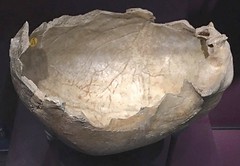
PREV ARTICLE
NEXT ARTICLE
FULL ISSUE
PREV FULL ISSUE
COINS AND POISONDavid Pickup submitted these notes on coins and poison. Thanks! -Editor Coins and illness – Drinking your Good Health? Continuing our series on coins and health I have been researching poisons, particularly arsenic. (I hope no-one looks at my search history on my computer!) That metal-like element is frequently found in detective stories and was a favourite of Agatha Christie. In Nineteenth Century Britain it was cheap and readily available as a rat killer and an ideal poison as had no smell and was tasteless. It was used widely in industry and some medicines.
There is another, similar story about a man called William Foxley. He was a potter at the Mint in the 1540s, earning £10 a year. In April 1547 Foxley inexplicably fell asleep for 14 days and 15 nights. King Henry VIII‘s doctors could neither diagnose nor rouse him, and the king himself even visited him. He eventually woke up as he continued to live and work for another 40 years in the Tower until 1587. It is possible that Foxley suffered from metal poisoning such as lead or arsenic. [2] So if you are self-isolating raise a toast to mint workers everywhere and throughout history, but be careful what you drink and what you drink from! [1] The story appears almost word for word in Smyth, William Henry, (1856), Descriptive catalogue of a cabinet of Roman family coins belonging to His Grace the Duke of Northumberland Bedford: James Webb; Unknown The Report by Select Commission on the Royal Mint 1849; Rogers Ruding, (1840), Annals of the coinage of Great Britain and its dependencies London: John Hearne [2] https://www.hrp.org.uk/tower-of-london/whats-on/the-towers-mint/surprising-stories-of-the-mint/#gs.3upxws
To read the earlier E-Sylum articles, see:
 Wayne Homren, Editor The Numismatic Bibliomania Society is a non-profit organization promoting numismatic literature. See our web site at coinbooks.org. To submit items for publication in The E-Sylum, write to the Editor at this address: whomren@gmail.com To subscribe go to: https://my.binhost.com/lists/listinfo/esylum All Rights Reserved. NBS Home Page Contact the NBS webmaster 
|
